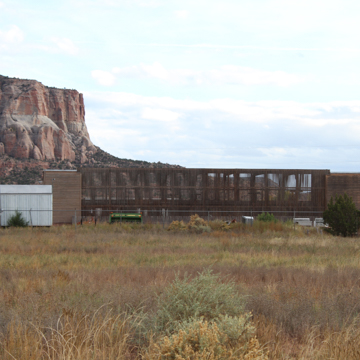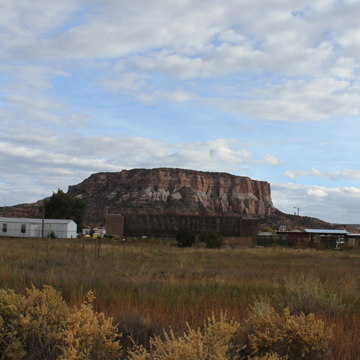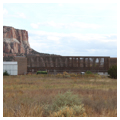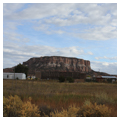Built in collaboration with federal agencies, the Zuni Eagle Sanctuary reconciles wildlife regulations with traditional religious practices, avoiding clichéd symbols of Native identity for greater sensitivity to the actual needs of a particular community.
Zunis employ eagle feathers as sacred materials in religious ceremonies and accompanying prayers. They have long met this need through eagle husbandry. Birds were either snared in the wild or collected as individual nestlings, which minimally affected the population since fratricide is common in eagle nests. The captured eagles were tethered or kept in stone and adobe enclosures, with grates made of branches, where their feathers were collected for use.
The twentieth-century decline of eagles in the United States led to federal protection, which detrimentally affected Native religious practices. The National Eagle Repository (1974) was established to receive dead eagles and redistribute them to tribal members, but applicants had to wait as long as 4 years. In 1995, Zunis and the U.S. Fish and Wildlife Service began discussing a more effective approach, planning a sanctuary for injured birds that could not be released back into the wild. The Zuni planning team consulted religious leaders and outside organizations experienced in caring for eagles, while architects Donna Cohen and Claude Armstrong designed the structure itself.
The Zuni Eagle Sanctuary is part of the tribe’s Fish and Wildlife Department facilities just off New Mexico 52, northeast of the pueblo where it meets the town of Blackrock. Not far from ancestral archaeological sites, Zunis historically used this level area for peach orchards. To the south are the brightly colored cliffs of Dowa Yalanne Mesa, while the new two-story Shiwi Ts’ana Elementary School (2015–2016) now sits to the east.
The primary aviary of this narrow building is 100 feet long, 41 feet wide, and 18 feet high. Slender 2-inch slats enclose its flyway, spaced for lighting and ventilation. At the ends are semi-enclosed roosts protected from the elements. Along its south side, four smaller slat-covered mews, 20 by 14 feet, provide security for individual birds needing protection from the larger convocation. The architects’ original design provided for a second aviary, community meeting room, and landscape elements referencing significant cultural sites, but these additional structures were not built.
The building’s terraced, boxy forms at once evoke the mass of nearby Dowa Yalanne and allude to historic Zuni architecture. The slats and masonry walls directly reference eagle enclosures located in the pueblo during the nineteenth century. The timber is local and sustainably harvested, while masonry elements are hand-dressed sandstone from Zuni sources, with elder stoneworkers preparing the blocks and teaching children how to lay them.
As of 2012, the Eagle Sanctuary had received forty injured eagles, and satellite aviaries were established in the community for familial care of two additional birds. For the Zuni community, the sanctuary has been a step towards self-sufficiency, producing thousands of feathers every year. It has challenged community members to meld traditional and modern husbandry practices, reviving ancient customs while receiving training in raptor care and medicine. It also augments the Zuni educational system through hands-on programs for children, high school work-study positions, and a mentoring partnership with the nearby Zuni Senior Center.
The project has inspired other Indian nations to establish similar sanctuaries in New Mexico, Arizona, Oklahoma, and Montana. It has received the American Institute of Architecture Award for Design Excellence (1999), recognition from the Harvard Project on American Indian Economic Development (2002), and the Dedalo Minosse Prize (2004) for its collaborative partnership.
The Zuni Fish and Wildlife Department does not encourage visitation, but the Eagle Sanctuary is visible from New Mexico 52 and B Avenue.
References
Albert, Steven, Edward Wemytewa, and Nelson Luna. “Revival of Zuni Eagle Husbandry in a Modern Context.” Environmental Practice 6, no. 3 (September 2004): 240-246.
Armstrong and Cohen Architecture. “Raptor Enclosure for the Pueblo of Zuni NM.” Accessed November 27, 2015. https://acarch.net/.
Malnar, Joy Monice, and Frank Vodvarka. New Architecture on Indigenous Lands. Minneapolis: University of Minnesota Press, 2013.
Woodward, Stephanie. “Zuni Sanctuary for Injured Eagles Bestows Blessings on Birds and Caregivers.” Indian Country Today, October 15, 2012.




